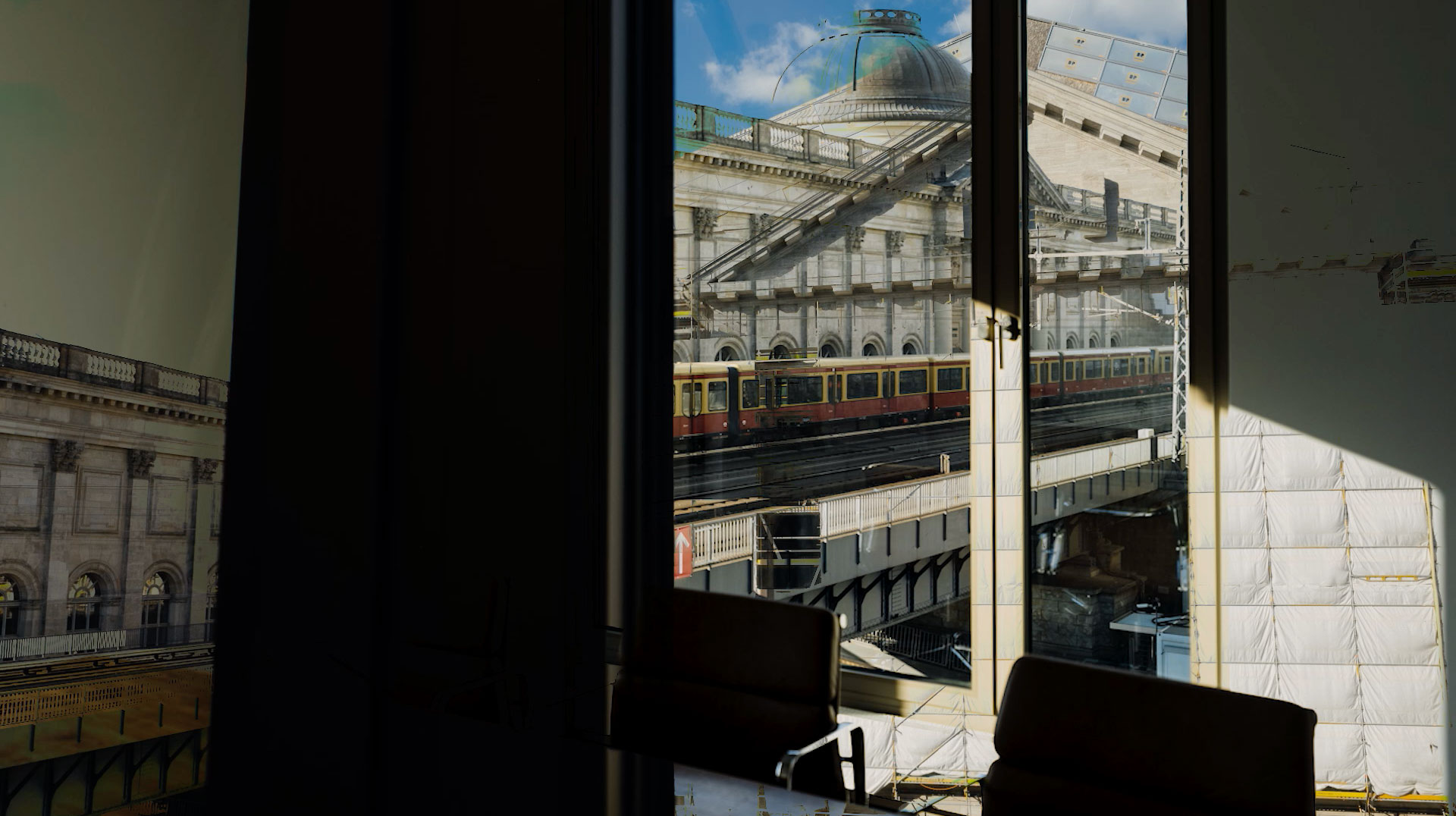The cultural heritage of jewellery, art collections and other cultural assets can be preserved for posterity and made accessible to the public with the help of foundation solutions.
This is because foundation law offers various options for preserving the intangible and cultural value of cultural objects. This can counteract the reduction of these objects to their material value, as was recently the case with the theft of the historic crown jewels from the Louvre.
Theft of culturally significant jewellery from the Louvre
On 19. October 2025, thieves stole several historic crown jewels from the Galerie d'Apollon in the Louvre. These included a tiara belonging to Empress Eugénie, a necklace belonging to Napoleon Bonaparte's second wife Marie-Louise, and several brooches, earrings and a sapphire necklace from the French Empire period.
The loss of these historically valuable pieces of jewellery from the Louvre shows how important it is to address the cultural value of cultural assets.
The jewels, for example, embody a part of European history and, not least, European craftsmanship. Their historical value for the country's cultural identity is therefore inestimable. President Emmanuel Macron also described the jewels as „French cultural property and part of France's history.“
dtb-partner and expert in foundation law and art historian Bertold Schmidt-Thomé also emphasises the great cultural loss caused by the theft: „I really fear that someone who was interested in the material value rather than the cultural value was behind this.“
„The theft at the Louvre affects not only France, but also the cultural memory of Europe. When works of art disappear, we lose more than just material values. Cultural assets are treasures of our identity; they are the memory of nations and cultural areas, the ideal heritage of humanity. Cultural assets are also a mirror of ourselves and make tangible where we come from, what defines us and where we want to go. When they are taken away from the public eye – when they are taken away from us – we lose a part of ourselves. That is why art and culture deserve not only promotion, but also protection.“ said German Minister of State for Culture and Media Wolfram Weimer.
The Louvre as a cultural institution under foundation law
The Louvre is a public institution whose collections bring together an important part of the cultural heritage of France and humanity, making it accessible and tangible to the general public.
To this end, the Louvre has created an endowment fund based on the Anglo-Saxon model. The Louvre Endowment Fund allows philanthropists to transfer capital or works of art to the institution (more on social entrepreneurship and philanthropy in foundation law).
This secures the institution's long-term financial stability and ensures that the cultural assets contributed are preserved in their „artistic and cultural heritage and remain intact for future generations.“
Laurence des Cars, President and Director of the Louvre and President of the Endowment Fund, says of the importance of preserving cultural heritage with the help of the Endowment Fund: „Some places stand the test of time, but at the same time serve as a point of reference firmly anchored in the reality of their respective eras. The Louvre is one such place. Thanks to the incomparable richness of its collections, the diversity of the cultures it presents and the history it tells us about ourselves, the Louvre is a wonderland, a place of learning and sometimes a welcome refuge."
German foundations as instruments for safeguarding cultural values
In the Federal Republic of Germany, too, private and public law foundation solutions play an important role in safeguarding cultural heritage and promoting culture. They often form the legal framework that ensures the preservation of the cultural context and value of cultural assets.
The founder and co-founder of the software company SAP, Dr. h. c. mult. Hasso Plattner, has assembled one of the most important collections of post-impressionist and impressionist art, featuring works by Claude Monet, Auguste Renoir, Alfred Sisley, Berthe Morisot, Camille Pissarro, Gustave Caillebotte and Paul Signac.
In order to preserve these cultural assets for posterity and make them accessible to the public, Plattner established the Hasso Plattner Foundation in 2015.
Under the motto „Experience the original, share the enthusiasm,“ he permanently displays parts of his painting collection at the Barberini Museum. His foundation also finances the museum's operations, the exhibition programme and the expansion of the Barberini Museum and MINSK Kunsthaus collections in Potsdam.
The Berlin City Museum, with its museums, preserves „the cultural heritage of the city of Berlin and the people who live here“ as a foundation. It is one of the largest cultural history institutions in Germany, with a collection of more than 4.5 million objects relating to the art, culture and history of the city. It is financially supported by the Federal Cultural Foundation.
The federal states also operate various private and public cultural foundations, such as the North Rhine-Westphalia Art Collection, which support the state in specifically strengthening important cultural institutions or in making acquisitions for museums.
These can in turn be supported by private foundations through endowments or loans through cooperation agreements in order to „promote the art collection in research projects, exhibitions and the development of new educational and communication concepts, among other things.“
The Prussian Cultural Heritage Foundation (SPK) is also a world-renowned cultural institution and has a total of 25 museums, libraries, archives and research institutes. Its collections „document the cultural development of humanity from its beginnings to the present day, in Europe and on other continents.“
The SPK is organised as a federal foundation and is jointly supported and financed by the federal government and all federal states. Since its establishment in 1957, it has carried the cultural heritage entrusted to it in its name. The Federal Republic of Germany had made the consolidation and preservation of Prussian cultural heritage a national task.
How does foundation law enable cultural values to be preserved?
Foundation law offers a wide variety of foundation solutions for preserving, protecting and making culturally significant objects accessible to future generations. With the help of foundation law, it is possible to prevent these objects from being reduced to their material value or fragmented into collections.
Private collections can be transferred to an independent foundation under civil law with legal capacity, which is equipped with its own organs such as a board of directors (§§80 ff. of the German Civil Code, BGB). Founders also have the option of establishing a dependent trust foundation, which is administered by another institution and can be used to organise exhibitions, for example (more on trust foundations).
Founders can also make individual donations to the assets of an existing foundation. In this way, individual culturally significant objects can be protected for posterity in their historical value and added to a collection.
Guaranteed existence as an advantage of foundation law
Private collectors who are committed to the eternal preservation of the cultural values of their collection can use foundation law to secure it for future generations and make it accessible to posterity.
One of the essential elements and distinctive features of a foundation, in contrast to other civil law institutions, is its lifespan (§80 I (2) BGB). A foundation can, in principle, exist for an indefinite period, even in perpetuity, and continuously serve the purpose of the foundation (an exception to this is a consumptive foundation).
In this way, cultural assets that represent centuries of history and convey historically relevant information, traditions and fashions of the time can be preserved. The cultural responsibility that such a collection entails can be adequately fulfilled by preserving it.
For example, collections of historical knowledge about jewellery can be kept together for eternity and made accessible to the public as a culturally valuable source of inspiration and teaching for the craft of jewellery making and goldsmithing.
Unlike other estate planning instruments, transferring a collection to a foundation also prevents the fragmentation of a collection that has been assembled with a high degree of expertise and private commitment.
Foundation law makes it possible to preserve a collection as a whole in perpetuity. This has the advantage that it can be kept together in its entirety, so that individual pieces are not removed from the context created by the collector.
Individual foundation statutes as an advantage of foundation law
In order to preserve culturally valuable assets, collectors can use individually designed and binding foundation statutes to provide specific information about the fate of their collection.
Founders can use the foundation's statutes to specify which cultural assets are to be preserved and maintained in what manner and made accessible to the public. In this way, the loss of cultural identity of objects can be prevented in accordance with the individual ideas of the founders.
Under certain conditions, they have the option of amending the foundation's statutes. With a view to new digital possibilities, such as the digitisation of collections, an amendment to the statutes can be considered (more on foundation statutes and amendments to statutes).
Foundation law also allows for the possibility of contributing one's own real estate to the foundation's assets and, with the help of the foundation's statutes, dedicating it to the purpose of exhibiting or operating one's own museum.
Thus, with the possibilities for individualisation offered by the foundation's statutes, foundation law also provides private collectors with an important legal means of ensuring the preservation of cultural assets for the general public and in accordance with their own ideas.
Tax privileges for charitable foundations
The German legislature also supports charitable foundations with tax privileges to help them protect cultural assets and make them accessible to the general public.
Non-profit foundations enjoy tax privileges insofar as they pursue „tax-privileged purposes“. According to §52 (1) of the German Fiscal Code; AO, the prerequisite for this is that the foundation's activities are „aimed at promoting the general public in material, intellectual or moral terms.“
According to §52 (1) No. 5 AO, the promotion of art and culture is recognised as „promoting the general public“ and thus constitutes a charitable purpose. In this context, the respective founder must demonstrate the art-historical relevance of their collection.
Specifically, a charitable foundation is exempt from inheritance or gift tax on the initial or subsequent transfer of the foundation's assets to the foundation and from corporation tax, trade tax and property tax. Under certain circumstances, foundations can also deduct donations for the promotion of tax-privileged purposes as special expenses (§10b (1) of the Income Tax Act; EStG).
With the help of the taxes saved, founders can in turn ensure the maintenance of their collection or the restoration of cultural assets, and funds can be made available to promote cultural projects.
Résumé
The preservation of culturally significant assets across generations can be ensured through various forms of foundations, which make them accessible to the public in perpetuity and thus bring them to life. Foundation law thus offers an important instrument for preserving cultural values and counteracting the reduction of cultural assets to their mere material value or the fragmentation of collections.
„In order to secure the cultural and historical value of art and cultural assets in their collections and prevent a loss of cultural identity, collectors should consider transferring their assets to a foundation“ says dtb-partner and expert in foundation law and art historian Bertold Schmidt-Thomé.
Status 30.10.2025

